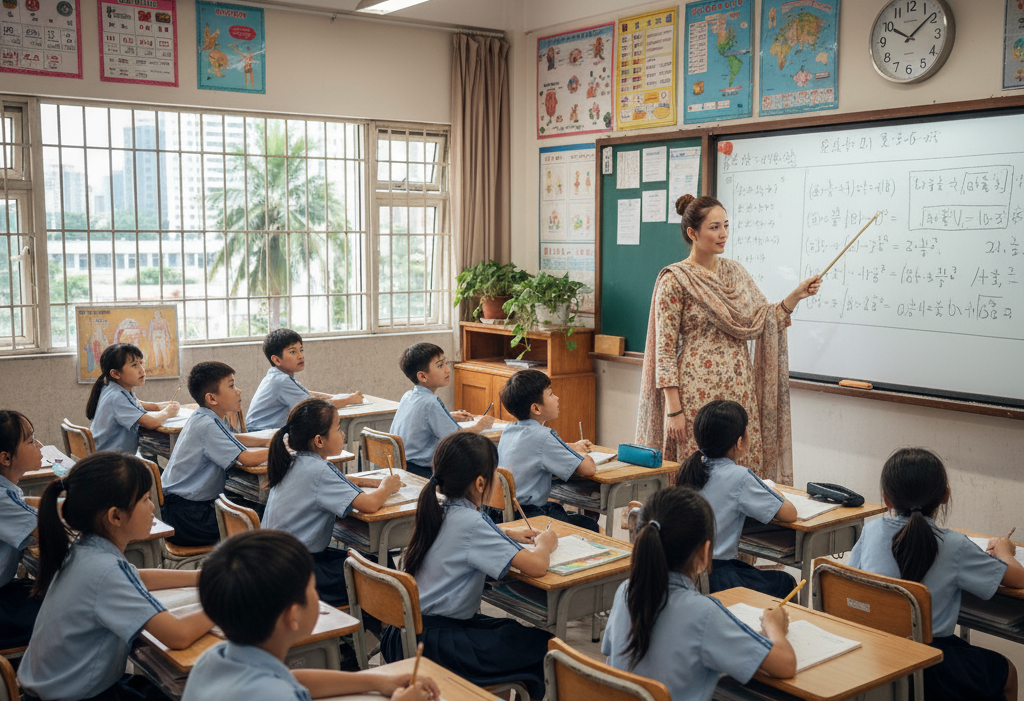
The government is preparing to convert over 20,000 primary school teacher posts into lower secondary (grades 6–8) and secondary (grades 9–12) levels to address long-standing teacher-post imbalances that have weakened public education quality.
A recent government study revealed that while primary schools currently have 20,465 surplus teachers, lower secondary grades face a shortage of 12,446 subject-specific teachers, and secondary grades lack 9,499 teachers, totaling a deficit of 21,945 educators.
Teacher Post Review Committee Findings
The findings come from a Teacher Post Review Committee led by former Education Secretary Dipendra Bikram Thapa, which submitted its report to former Education Minister Raghuji Pant three months ago.
The report suggested that converting surplus primary teacher posts to upper grades could effectively address the shortage of over 21,000 teachers in secondary education. Hari Prasad Aryal, Director and Information Officer at the Education and Human Resource Development Center, confirmed that this conversion could also reduce the government’s financial burden while maintaining education quality.
Surplus in Primary Schools
Currently, the government has a sanctioned strength of 80,399 primary school teachers, but due to political pressures and temporary, contractual, and grant-based appointments, the number of posts has been artificially inflated by 20,465, bringing the total to 107,764 primary teacher posts.
The Education and Human Resource Development Center has withheld approval from the Teacher Service Commission for 5,000 requested vacant primary posts, following recommendations in the review report. According to Aryal:
“After freezing vacant primary posts for five years, the surplus reaches over 20,000. These posts are now ready to be converted to lower and secondary levels. Since secondary teachers receive higher salaries and benefits, converting primary posts reduces the overall number while helping align teacher supply with demand.”
Impact on Public Education Quality
The surplus in primary schools alongside shortages in lower and secondary grades has negatively affected education quality. The lack of subject-specific teachers in upper grades has weakened learning outcomes. Aryal emphasized that teacher post conversion is now critical for improving the public school system.
The report submitted by Dipendra Bikram Thapa three months ago has not yet been made public.
Making Computer Education Mandatory
Meanwhile, Education, Science, and Technology Minister Mahavir Pun has directed the Curriculum Development Center to make computer education a compulsory subject. Currently, computer studies are optional in grades 9 and 10, but the minister emphasizes practical exposure to information technology for all students.
Minister Pun has also instructed that every public school should have at least one dedicated computer teacher, and implementation has already begun under government plans.
Curriculum Adjustments
Yuvraj Paudel, Director-General of the Curriculum Development Center, stated that the current national curriculum prescribes five mandatory subjects in grades 9 and 10 — English, Nepali, Mathematics, Science & Technology, and Social Studies — totaling 500 marks, with two optional subjects totaling 200 marks.
“Computer is currently taught as an optional subject. Following the minister’s instructions, discussions are underway on how to implement it as a 100-mark mandatory subject,” Paudel explained.
“Currently, grades 9 and 10 have 32 teaching hours per year per subject, totaling 1,024 hours. School time is six hours per day. Adding one mandatory subject increases workload by 128 hours per year, which may be burdensome for students.”











